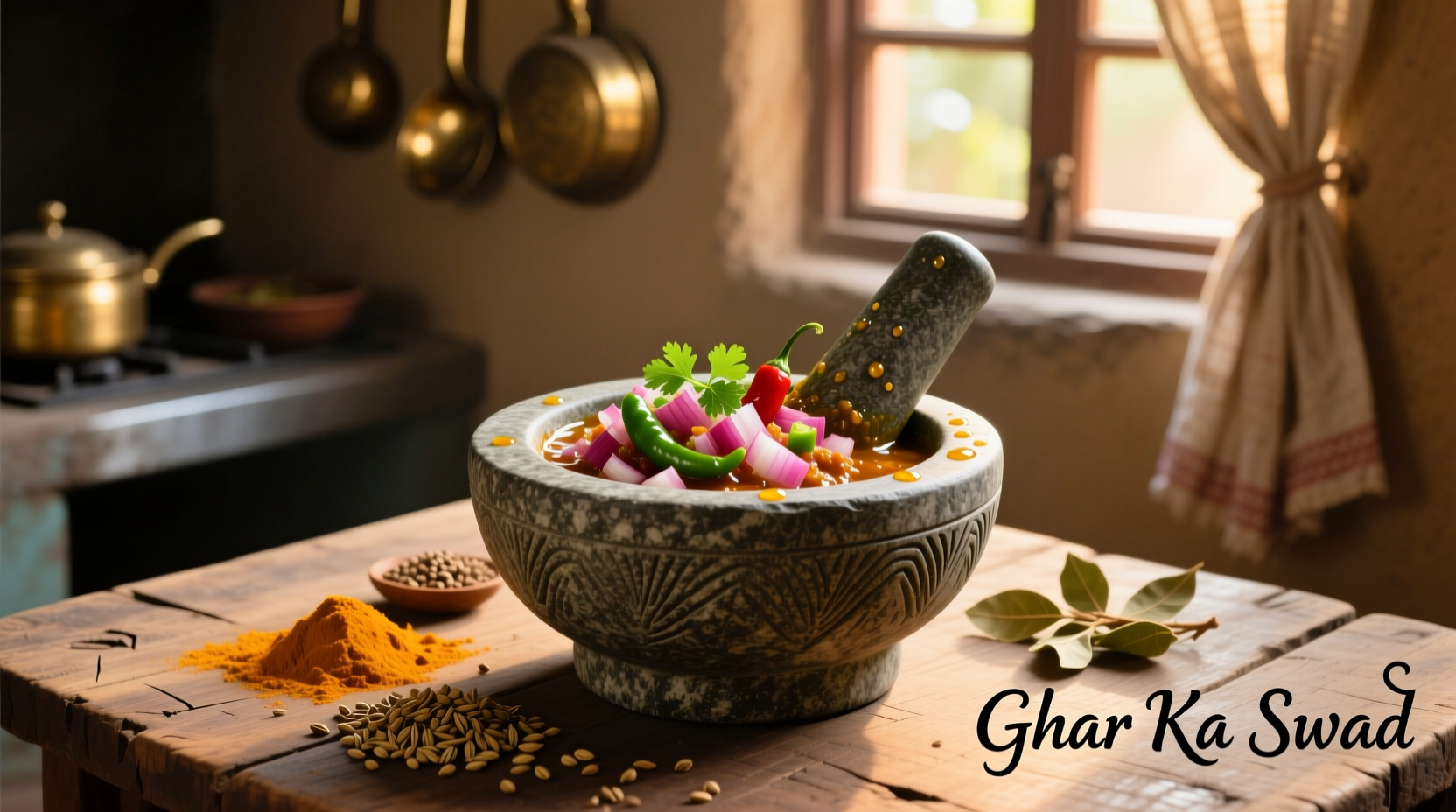Discover why this humble condiment has become a staple across Indian households and restaurants worldwide. Whether you're a beginner cook or an experienced chef, mastering onion chutney unlocks authentic flavors that transform simple meals into culinary experiences.
The Evolution of Onion Chutney: From Street Food to Global Favorite
Onion chutney's journey began centuries ago in South India's bustling street food culture. Historical food records from the Indian Council of Agricultural Research show that onion-based condiments were documented as early as the 16th century in Tamil Nadu's culinary manuscripts. Originally created as a quick accompaniment for travelers, the recipe evolved through three distinct phases:
| Historical Period | Key Developments | Regional Influence |
|---|---|---|
| Pre-1800s | Basic preparation with onions, green chilies, and salt | South Indian street vendors |
| 1800-1950 | Addition of tamarind, coconut, and roasted spices | Spread to Sri Lanka and Malaysia through trade routes |
| Post-1950 | Modern variations with tomatoes, mint, and international ingredients | Global adoption in fusion cuisine |
Regional Variations You Should Know
While the basic concept remains consistent, regional differences create distinct flavor profiles. Understanding these variations helps you select the perfect chutney for your meal:
- South Indian Style: Features tamarind for tanginess, curry leaves, and mustard seeds - ideal for dosas and idlis
- Gujarati Version: Incorporates jaggery for sweetness, balancing the onion's sharpness
- Hyderabadi Special: Uses mint and coriander for a refreshing twist with biryanis
- Coconut Onion Chutney: Blended with fresh coconut for creamy texture, popular in Kerala

Perfect Onion Chutney Recipe (15-Minute Method)
Professional chefs recommend these precise measurements for authentic flavor. This foolproof method works whether you're using a blender or traditional grinding stone:
Essential Ingredients
- 2 medium red onions (500g), finely chopped
- 2 green chilies, slit lengthwise
- 1 inch ginger, julienned
- 10 fresh curry leaves
- 1 tsp tamarind paste (or 1 tbsp lemon juice)
- 1/2 tsp mustard seeds
- 1/4 tsp asafoetida (hing)
- Salt to taste
- 2 tbsp water (for blending)
Step-by-Step Preparation
- Heat 1 tbsp oil in a pan until shimmering
- Add mustard seeds and let them splutter
- Add asafoetida, curry leaves, and green chilies - sauté for 30 seconds
- Incorporate onions and ginger, cooking on medium heat for 5 minutes until translucent
- Remove from heat and cool slightly
- Transfer to blender with tamarind paste and salt
- Pulse to desired consistency (coarse for traditional texture, smooth for modern presentation)
When to Use Which Type: Context Matters
Understanding the appropriate context for each variation prevents flavor clashes. Culinary experts from the National Institute of Nutrition recommend these pairings:
- Traditional coarse-textured chutney: Best with steamed rice dishes and idlis - the texture complements soft foods
- Smooth blended version: Ideal as sandwich spread or dip for appetizers
- Sweet-sour variations: Perfect with fried snacks like pakoras
- Avoid serving with: Delicate fish dishes or mild cheeses where the strong onion flavor would dominate
Storage Secrets for Maximum Freshness
Preserve your chutney's vibrant flavor with these professional techniques:
- Store in airtight glass container with 1/4 inch oil layer on top
- Refrigerate for up to 5 days (the optimal flavor window)
- Freeze in ice cube trays for longer storage (up to 3 months)
- Never store in metal containers which react with the acidic components
Common Mistakes That Ruin Onion Chutney
Even experienced cooks make these critical errors. Avoid these pitfalls for perfect results every time:
- Using yellow onions instead of red: Red onions provide better color and milder flavor
- Over-blending: Creates a paste-like consistency rather than vibrant texture
- Adding raw onions: Always sauté onions first for balanced flavor development
- Incorrect spice timing: Add delicate ingredients like curry leaves at the end of cooking
Why Onion Chutney Deserves a Place in Your Kitchen
Beyond its delicious taste, onion chutney offers surprising health benefits documented by the Indian Council of Medical Research. Onions contain quercetin, a powerful antioxidant, while the cooking process enhances bioavailability of nutrients. Just two tablespoons provide 15% of your daily vitamin C requirement without added preservatives found in commercial versions.











 浙公网安备
33010002000092号
浙公网安备
33010002000092号 浙B2-20120091-4
浙B2-20120091-4